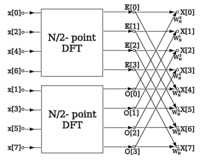
Photo from wikipedia
In recent years, with the development of deep learning (DL), the hyperspectral image (HSI) classification methods based on DL have shown superior performance. Although these DL-based methods have great successes,… Click to show full abstract
In recent years, with the development of deep learning (DL), the hyperspectral image (HSI) classification methods based on DL have shown superior performance. Although these DL-based methods have great successes, there is still room to improve their ability to explore spatial–spectral information. In this article, we propose a 3-D octave convolution with the spatial–spectral attention network (3DOC-SSAN) to capture discriminative spatial–spectral features for the classification of HSIs. Especially, we first extend the octave convolution model using 3-D convolution, namely, a 3-D octave convolution model (3D-OCM), in which four 3-D octave convolution blocks are combined to capture spatial–spectral features from HSIs. Not only the spatial information can be mined deeply from the high- and low-frequency aspects but also the spectral information can be taken into account by our 3D-OCM. Second, we introduce two attention models from spatial and spectral dimensions to highlight the important spatial areas and specific spectral bands that consist of significant information for the classification tasks. Finally, in order to integrate spatial and spectral information, we design an information complement model to transmit important information between spatial and spectral attention features. Through the information complement model, the beneficial parts of spatial and spectral attention features for the classification tasks can be fully utilized. Comparing with several existing popular classifiers, our proposed method can achieve competitive performance on four benchmark data sets.
Journal Title: IEEE Transactions on Geoscience and Remote Sensing
Year Published: 2021
Link to full text (if available)
Share on Social Media: Sign Up to like & get
recommendations!